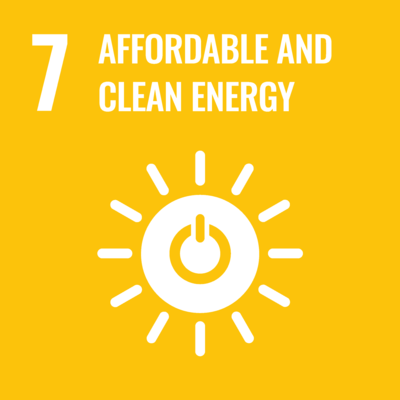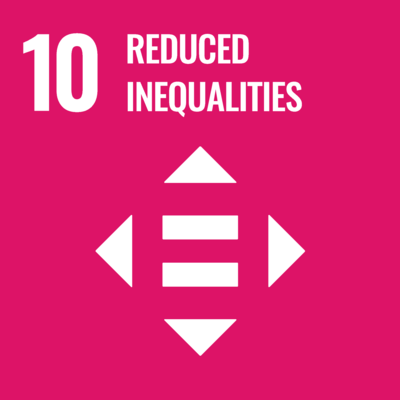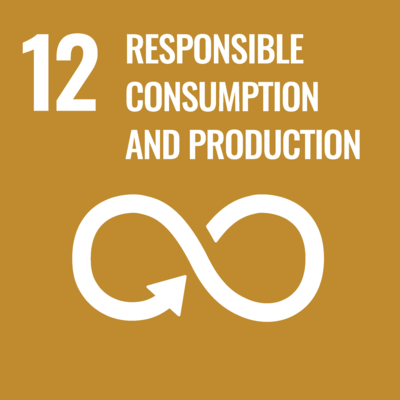SDG 7.2.3 Carbon reduction and emission reduction process
1. In accordance with the Ministry of Education’s regulations, NCUE has achieved electricity saving of at least 1% annually, thereby effectively reducing the amount of carbon dioxide emissions.
2. We have formulated the ‘NCUE’s key implementation points to promote energy conservation and carbon reduction’, which focus on management measures for power and water conservation, energy saving for lighting and air conditioning, and environmental education. The purpose is to reduce our carbon footprint and carbon dioxide emissions (see Annex 7.2.1A).
3. The school has completed the installation of 2091.375 kWp and 571.5 kW photovoltaic solar power at its Jinde and Baoshan Campuses respectively. Based on the average daily sunlight duration of 3.5 hours in the Changhua region, the total energy production can be calculated as (2091.375+571.5)×365×3.5= 3,401,823 kWh(12,247GJ). According to the 2023 carbon emission factor for electricity published by the Ministry of Economic Affairs at 0.494kg of CO2 per kWh, this would result in a reduction of approximately 3,401,823×0.494=1,683,500 kg of carbon emission.
4. Baoshan Campus is equipped with a 1 MW/1.26MWh energy storage system (Figure 1), along with two additional 100 kW/50 kWh energy storage systems that support the operation of the campus microgrid (Figure 2). This system allows for the storage of energy during off-peak nighttime hours and its release during daytime peak periods, effectively achieving load shifting (Figure 3). In addition, this approach reduces the output of coal-fired power plants during peak hours, thereby decreasing carbon emissions from power generation. Additionally, using energy storage for load-shaving and valley-filling helps to smooth the daily load curve, reduces peak line currents, and consequently decreases power transmission losses by approximately 3% whilst contributing to energy conservation and carbon reduction.

Figure 1. Baoshan Campus 601.5 kW Solar Photovoltaic System and 1 MW/1.26 MWh Energy Storage System
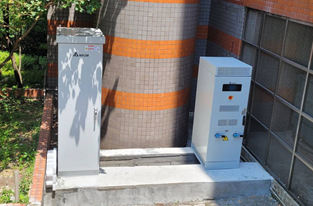
Figure 2. 100 kW/50 kWh energy storage system
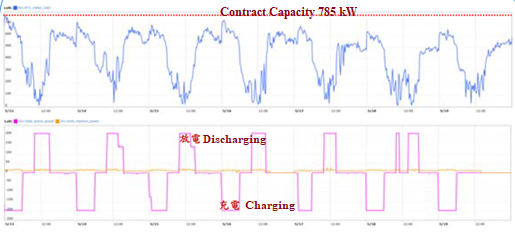
Figure 3. Effect of Load Shifting
5. In addition, NCUE has purchased a 30 kW/78 kWh electric bus to replace traditional internal combustion engine vehicles (Figure 4). This not only aligns with the EV100 initiative’s objectives but also allows us to use the electric bus as an energy storage system during periods of inactivity, thereby supplementing the aforementioned load-shaving and valley-filling benefits.
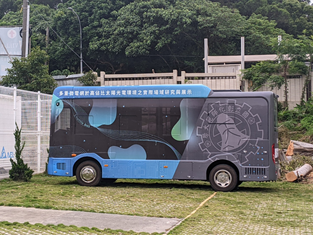
Figure 4. 30 kW/78 kWh electric bus
6. NCUE utilizes an energy storage system to reduce the contract capacity from 835 kW to 785 kW (Figure 5), decreasing overall external power purchases and subsequently reducing carbon emissions.
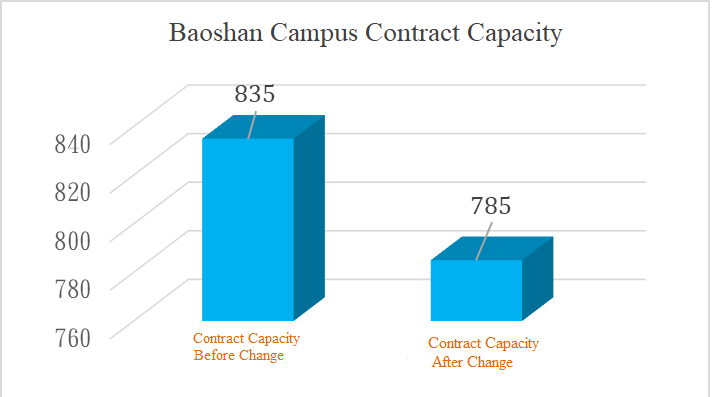
Figure 5. Reduction of Contract Capacity in Baoshan Campus







